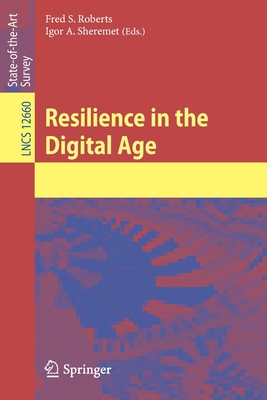相關主題
商品描述
Modern human societies rely on measurements. Measurements are essential for understanding and describing the world around us and the overall nature. Ensuring measurement accuracy, traceability, and consistency is important in scientific research, trade, manufacturing, health and medicine, and the everyday running of modern societies. One of the most essential components of measurement is calibration. This book walks the reader through fundamental principles of calibrations, traditional calibration methods, the related standards, and procedures, as well as a fast-developing and diverse range of artificial intelligence (AI)-based calibration methods.
Calibration complies with strict regulations and legislation by governments, relevant authorities, and concerned parties. New and effective calibration techniques are evolving in parallel to the traditional methods. As explained here, new techniques that are based on AI offer instantaneous, continuous calibrations in standalone devices as well as in complex and large systems. Continuous and large-scale calibrations are possible due to the new generation of computers and advanced digital systems, intelligent devices and sensors, communication networks, advanced mathematical methods, and the newly developed areas such as cyber-physical systems.
This book highlights that advanced technological and AI methods are applied for the calibration of distributed cyber-physical and data-driven systems. AI-based calibrations find applications in large-scale systems, where traditional methods have become almost impossible to implement or can be costly. Typical examples are Internet of Things (IoTs), self-driving vehicles, intelligent transportation systems, unmanned aerial vehicles, drones and drone clusters, industrial processes, communication networks, health and medicine, environmental monitoring, pollution control, remote and inaccessible devices, smart cities, space explorations, management systems, economics, and finance.
商品描述(中文翻譯)
現代人類社會依賴測量。測量對於理解和描述我們周圍的世界及其整體性質至關重要。確保測量的準確性、可追溯性和一致性在科學研究、貿易、製造、健康與醫療以及現代社會的日常運作中都非常重要。測量的最基本組成部分之一是校準。本書將引導讀者了解校準的基本原則、傳統校準方法、相關標準和程序,以及一系列快速發展且多樣化的基於人工智慧(AI)的校準方法。
校準遵循政府、相關機構和關心方的嚴格法規和立法。新的有效校準技術與傳統方法並行發展。如本書所述,基於AI的新技術提供了獨立設備以及複雜和大型系統中的即時、持續校準。由於新一代計算機和先進的數位系統、智能設備和傳感器、通信網絡、先進的數學方法以及新開發的領域如網絡物理系統,使得持續和大規模的校準成為可能。
本書強調先進的技術和AI方法被應用於分佈式網絡物理系統和數據驅動系統的校準。基於AI的校準在大型系統中找到了應用,這些系統中傳統方法幾乎無法實施或成本高昂。典型的例子包括物聯網(IoT)、自駕車、智能交通系統、無人機、無人機集群、工業過程、通信網絡、健康與醫療、環境監測、污染控制、遠程和難以接觸的設備、智慧城市、太空探索、管理系統、經濟和金融。
作者簡介
Halit Eren received a BEng, 1973, and an MEng, 1975, in electrical engineering and a PhD in control engineering, 1979, all from the University of Sheffield, UK. He obtained an MBA from Curtin University in 1999, majoring in international management. He worked in Etibank as a project engineer on automation and instrumentation in copper plants. He served as a lecturer at Hacettepe University-Beytepe Campus, 1980-1981, and as an assistant professor at the Middle East Technical University-Gaziantep Campus, 1982. He worked at Curtin University between 1983 and 2015, first at the School of Mines, Kargoorlie, and then at the School of Electrical Engineering, Bentley Campus, Perth, Western Australia. He served as an associate professor at Polytechnic University, Hong Kong, and as a visiting professor at the University of Wisconsin-Madison, USA. His academic duties involved research and teaching in control systems, digital transmission and interface design, process control and instrumentation, and engineering management. He has attracted numerous research grants from the government and industry, and has also acted as a consultant for many private and governmental organizations. He supervised and graduated PhD and master's degree students. He served as the head of the Department of Electronics and Electrical Engineering at Curtin University.
作者簡介(中文翻譯)
Halit Eren 於1973年獲得英國謝菲爾德大學的電機工程學士學位,1975年獲得碩士學位,1979年獲得控制工程博士學位。他於1999年在科廷大學獲得工商管理碩士學位,主修國際管理。他曾在Etibank擔任專案工程師,負責銅冶煉廠的自動化和儀器儀表工作。他於1980年至1981年在哈吉特佩大學貝伊特佩校區擔任講師,並於1982年在中東科技大學加濟安泰普校區擔任助理教授。他於1983年至2015年在科廷大學工作,最初在卡古利的礦業學院,然後在西澳大利亞州珀斯的電機工程學院任職。他曾擔任香港理工大學的副教授,以及美國威斯康辛大學麥迪遜分校的訪問教授。他的學術工作涉及控制系統、數位傳輸與介面設計、過程控制與儀器儀表以及工程管理的研究與教學。他吸引了來自政府和產業的眾多研究經費,並且擔任許多私營和政府機構的顧問。他指導並畢業了多位博士和碩士學位學生。他曾擔任科廷大學電子與電機工程系的系主任。












